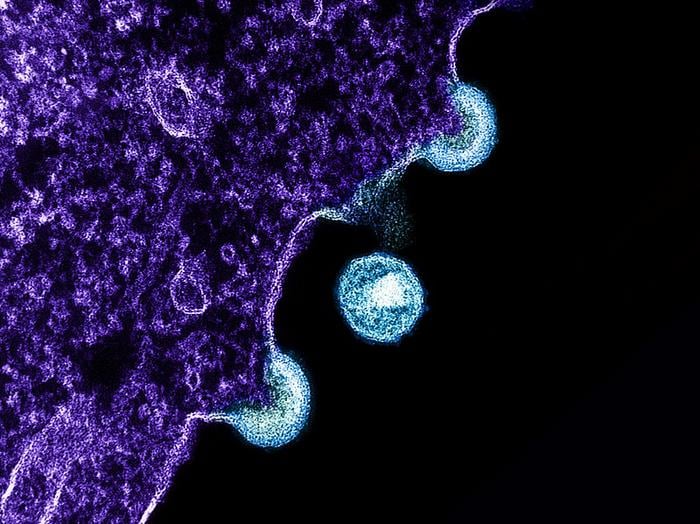Researchers have made progress in the quest for an HIV vaccine by using innovative immunologic techniques to stimulate the production of rare antibody precursors in animals. The findings, published in Nature Immunology, offer a glimmer of hope in the long-standing challenge of developing a preventive vaccine against the genetically diverse virus.
HIV’s ability to mutate has made it a formidable target for vaccine development, but a class of antibodies known as broadly neutralizing antibodies (bNAbs) may provide a way to overcome this obstacle. These antibodies bind to parts of the virus that remain constant even when it mutates. The study focused on a specific class of bNAbs called 10E8, which is a priority for HIV vaccine development due to its ability to neutralize a wide range of HIV variants.
Engineered Immunogens Mimic Hidden HIV Region
The researchers engineered immunogens on nanoparticles that mimic a specific part of gp41, a glycoprotein on HIV’s surface involved in the virus’s entry into human immune cells. This region is typically hidden in a recessed crevice on HIV’s surface, making it difficult for antibodies to reach and bind to it. By vaccinating rhesus macaque monkeys and mice with these immunogens, the researchers elicited specific responses from the 10E8 B cell precursors and induced antibodies that showed signs of maturing into bNAbs capable of reaching the hidden gp41 region.
“We’ve been able to induce the rare precursors of broadly neutralizing antibodies in animals, which is a promising step towards developing an effective HIV vaccine,” said lead author Torben Schiffner, a researcher at the Scripps Consortium for HIV/AIDS Vaccine Development.
Potential for Translation to Humans
The researchers also found that the same immunogens produced B cells that could mature to produce an additional type of gp41-directed bNAb called LN01. Moreover, their laboratory analysis of human blood samples revealed that 10E8-class bNAb precursors occurred naturally in people without HIV, and that their immunogens bound to and isolated naïve human B cells with 10E8-like features. These observations suggest that the promising immunization data from mice and macaques has the potential for translation to humans.
The research was conducted by the Scripps Consortium for HIV/AIDS Vaccine Development, one of two consortia supported by the National Institutes of Health’s (NIH) National Institute of Allergy and Infectious Diseases (NIAID), along with collaborating partners including the Bill & Melinda Gates Foundation and other NIH Institutes and Offices.
According to the authors, these findings support the development of the immunogens as the first part of a multi-step vaccine regimen for humans. Their work further supports research in developing a germline-targeting strategy for priming the immune system to elicit another bNAb called VRC01, which was discovered by NIAID researchers almost 15 years ago. The ultimate goal of this line of research is to develop an HIV vaccine that generates multiple classes of bNAbs to prevent HIV infection.


